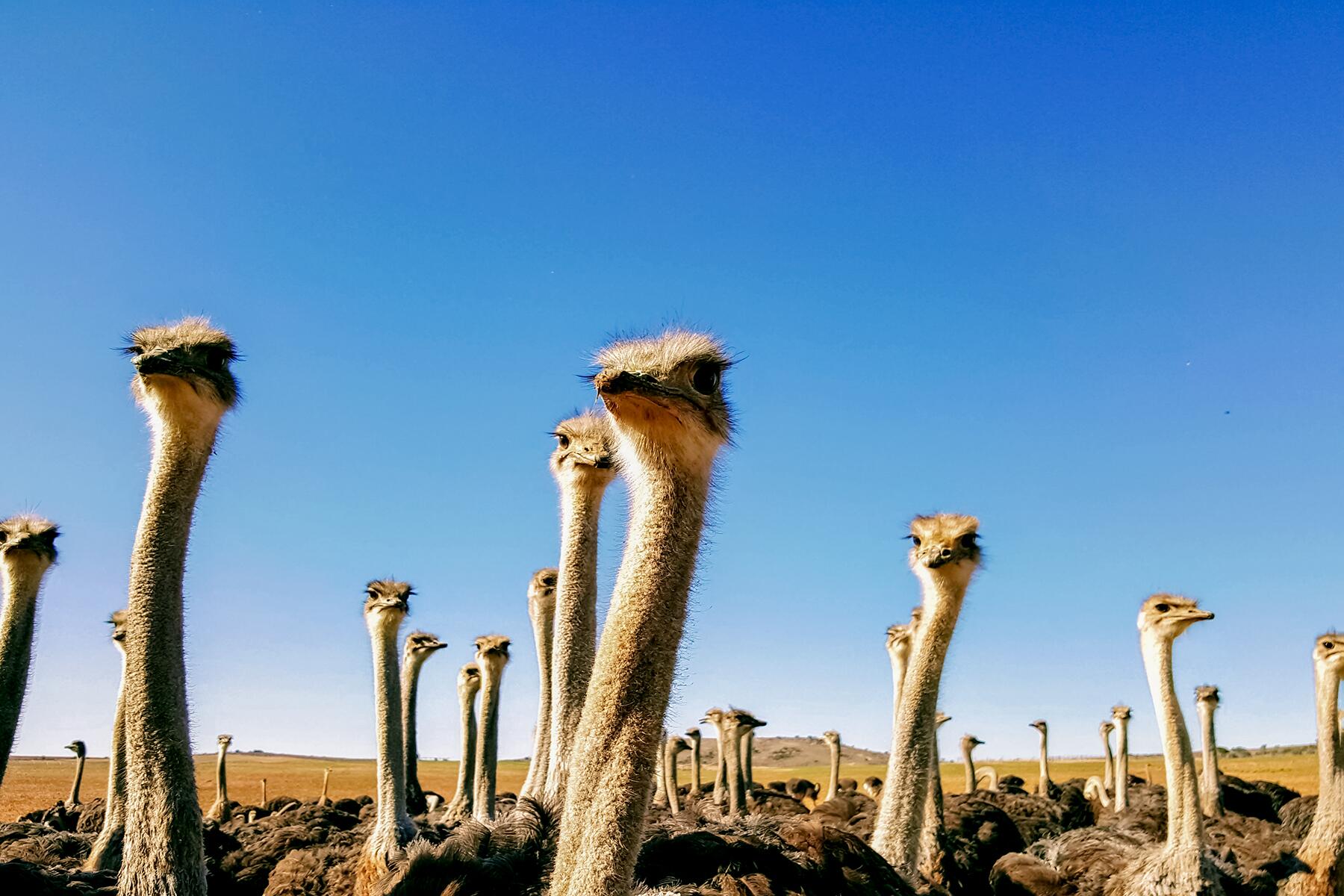Would you go on an ostrich safari?
In Oudtshoorn, South Africa, visitors won’t find forests or savannas, lions or elephants, but a more arid and mountainous landscape, not unlike the United States’ western frontier.
Oudtshoorn is not one of South Africa’s most visited cities. Despite having incredible attractions, spectacular scenery, and unique wildlife, Oudtshoorn is often eclipsed by other more popular destinations, like Cape Town. Nonetheless, this small town of about 60,000 people in the center of the Western Cape’s Klein Karoo province is worth a visit. For a long time, it was known as the “ostrich capital of the world,” and it’s said ostriches were the foundation of its economy.
INSIDER TIPOudtshoorn is only an hour’s drive from the coastal town of Mossel Bay on the famous Garden Route.
In the late 1800s, ostrich feathers were fashionably in demand by the rich and the powerful. But as is the nature of fashion, feathers eventually fell out of favor. The drop in popularity, however, did not stop the breeding of the extremely curious large bird on South African farms, where everything is intended to be traded or exported. Feathers, meat, leather, and even eggshells were considered sellable items. Ostrich meat, especially, has been touted for its low cholesterol and can still be found in sausages, steaks, and even pizzas.
Today, Oudtshoorn’s economy is based mainly on agriculture and tourism rather than ostrich farms. In the past, it was common for tourists to ride ostriches as part of the attraction. In the pursuit of more ethical tourism and increasing standards of animal welfare, this practice is becoming increasingly rare, fortunately.
Recommended Fodor’s Video
Regardless of the changing attractions, Oudtshoorn offers many outdoor activities for all kinds of travelers, such as visiting caves, wineries, ranches with wild animals, and of course, safaris to observe the regional typical fauna. Oudtshoorn’s days are usually hot, especially in the summer (November to February), and the nights are cold, but in general, the climate is dry and sunny all year round, making it an easy destination to visit at any time.
Where to Stay
There are many options for ordinary accommodations, but the experience of staying in a tent with a kitchen, living room fireplace, two bedrooms, heat/air conditioning, a bathroom with a hot shower, and even an electric blanket is the best option.
Set in a small private game reserve, the tents of AfriCamps Klein Karoo, which can accommodate up to five people, are located at a certain distance to ensure guests’ privacy. On the deck, you can enjoy watching lakeside antelope trot past. For breakfast, a rustic wooden box is delivered, containing a variety of bread, jams, juices, milk, butter, etc. The camp utilizes clean energy practices; at night, small glass jars with solar plates on the lids illuminate the dirt road of the game reserve. Although the game reserve has a pool, visitors often prefer to explore the town’s unique attractions.
What to See and Do
Cango Wildlife Conservation Center
This ranch is home to over 90 animals and works to save cheetahs and other endangered species. One of its more daring attractions is a cage submerged in a pool with crocodiles, where visitors can get a unique view of the frightening reptiles. You can see many animals of the African fauna, especially the graceful lemurs and even more exotic species like the white lion. The space is huge, and the enclosures are well-structured with ponds, rocks, and trees.
Meerkat Safari
Don’t expect to see elephants or lions on these safaris. In the arid vegetation, the space is dominated by graceful meerkats, but it is also possible to observe giraffes, wild boars, zebras, and other larger animals. The tour takes place early in the morning in a 4×4 jeep and may include a breakfast in nature. As there are no predators, getting off the jeep and walking around is possible. However, to observe the meerkats, you will need some luck and patience because they are animals that live below ground but usually come out to sunbathe.

Ostrich Farms
Visiting an ostrich farm is quite unique. The birds grow up to 8 feet tall and can weigh up to 300 pounds. Their voracious appetite and curiosity make these animals eat just about anything, and approaching them can result in a painless peck (similar to a pinch). There are an estimated 450 farms with hundreds of ostriches, some of which even export feathers for the Carnival in Rio de Janeiro, Brazil.
Ostrich Safari
This guided tour is just as fun as any safari, especially as it replaces the traditional jeeps with a type of wagon pulled by a tractor. It is possible to observe the ostriches very closely on these safaris. Visitors are able to feed the huge birds by hand or with a spoon and visit the small museum dedicated to the species (here, you can see the strangest objects taken from the stomach of the animal).
INSIDER TIPAlthough the ostrich’s peck does not hurt, they have sharp claws that can injure a person.

Cango Caves
Considered South Africa’s oldest tourist attraction, the Cango Caves is a cave complex with massive (limestone) rock formations. The guided tour can be done in groups or privately. However, it is not for those who are sensitive to enclosed spaces. The two types of tours, standard and adventure, encourage visitors to enter tight crevices.
On your way into town, stop by Ronnie’s Sex Shop, which, despite its name, is not an adults-only establishment but rather an authentic South African pub, with T-shirts and bras hanging from the ceiling and walls covered in phrases written by visitors.
Oudtshoorn is among the cheapest cities in South Africa, and you can eat in good restaurants at excellent prices. The unique aspects of Oudtshoorn make it well worth a stop on your South African travels. While other travelers are out chasing lions, you’ll find in Oudtshoorn that the ostrich reigns supreme.



